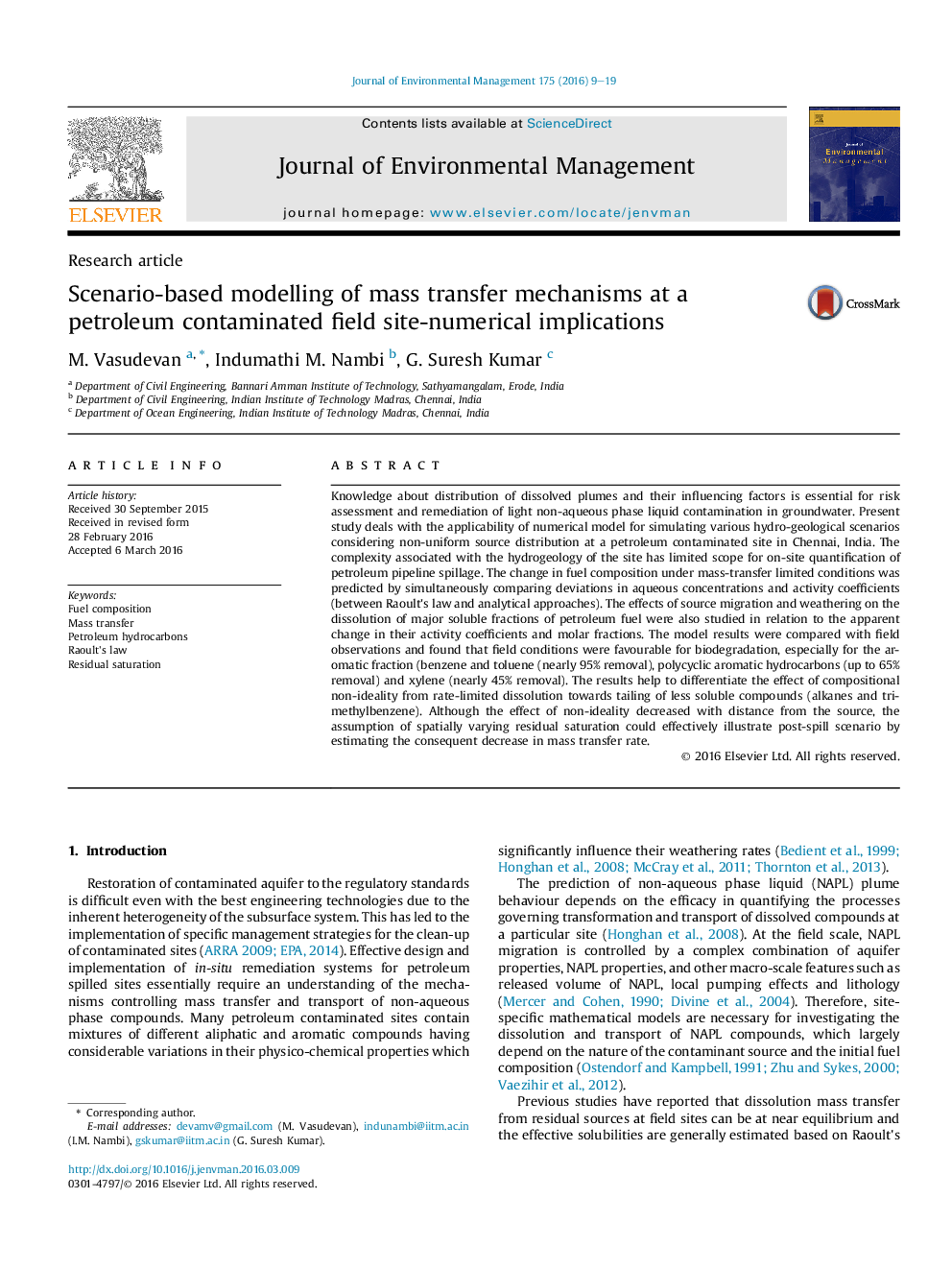| Article ID | Journal | Published Year | Pages | File Type |
|---|---|---|---|---|
| 7480489 | Journal of Environmental Management | 2016 | 11 Pages |
Abstract
Knowledge about distribution of dissolved plumes and their influencing factors is essential for risk assessment and remediation of light non-aqueous phase liquid contamination in groundwater. Present study deals with the applicability of numerical model for simulating various hydro-geological scenarios considering non-uniform source distribution at a petroleum contaminated site in Chennai, India. The complexity associated with the hydrogeology of the site has limited scope for on-site quantification of petroleum pipeline spillage. The change in fuel composition under mass-transfer limited conditions was predicted by simultaneously comparing deviations in aqueous concentrations and activity coefficients (between Raoult's law and analytical approaches). The effects of source migration and weathering on the dissolution of major soluble fractions of petroleum fuel were also studied in relation to the apparent change in their activity coefficients and molar fractions. The model results were compared with field observations and found that field conditions were favourable for biodegradation, especially for the aromatic fraction (benzene and toluene (nearly 95% removal), polycyclic aromatic hydrocarbons (up to 65% removal) and xylene (nearly 45% removal). The results help to differentiate the effect of compositional non-ideality from rate-limited dissolution towards tailing of less soluble compounds (alkanes and trimethylbenzene). Although the effect of non-ideality decreased with distance from the source, the assumption of spatially varying residual saturation could effectively illustrate post-spill scenario by estimating the consequent decrease in mass transfer rate.
Related Topics
Physical Sciences and Engineering
Energy
Renewable Energy, Sustainability and the Environment
Authors
M. Vasudevan, Indumathi M. Nambi, G. Suresh Kumar,
